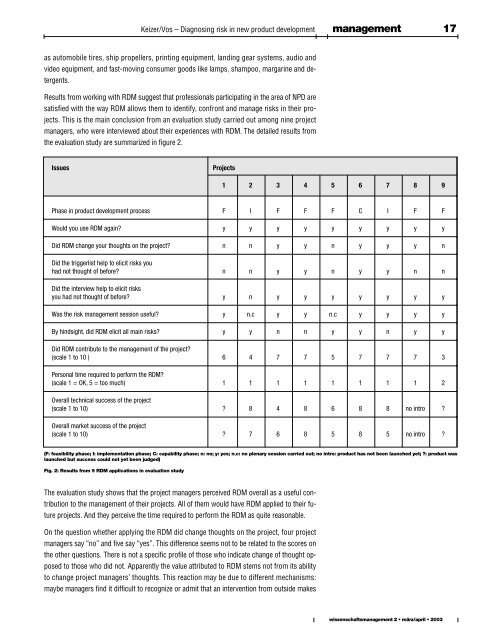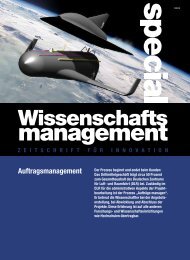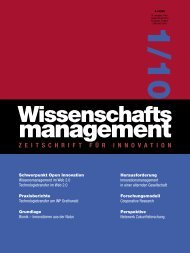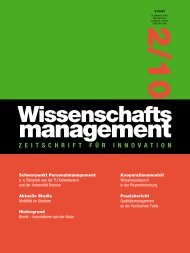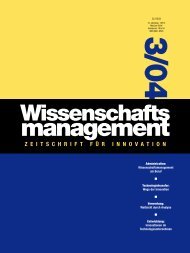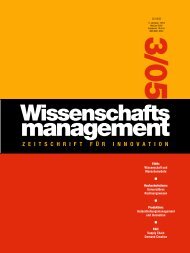Heft 2/2003 - Lemmens Medien GmbH
Heft 2/2003 - Lemmens Medien GmbH
Heft 2/2003 - Lemmens Medien GmbH
Sie wollen auch ein ePaper? Erhöhen Sie die Reichweite Ihrer Titel.
YUMPU macht aus Druck-PDFs automatisch weboptimierte ePaper, die Google liebt.
Keizer/Vos – Diagnosing risk in new product development management 17<br />
as automobile tires, ship propellers, printing equipment, landing gear systems, audio and<br />
video equipment, and fast-moving consumer goods like lamps, shampoo, margarine and detergents.<br />
Results from working with RDM suggest that professionals participating in the area of NPD are<br />
satisfied with the way RDM allows them to identify, confront and manage risks in their projects.<br />
This is the main conclusion from an evaluation study carried out among nine project<br />
managers, who were interviewed about their experiences with RDM. The detailed results from<br />
the evaluation study are summarized in figure 2.<br />
Issues Projects<br />
The evaluation study shows that the project managers perceived RDM overall as a useful contribution<br />
to the management of their projects. All of them would have RDM applied to their future<br />
projects. And they perceive the time required to perform the RDM as quite reasonable.<br />
On the question whether applying the RDM did change thoughts on the project, four project<br />
managers say “no” and five say “yes”. This difference seems not to be related to the scores on<br />
the other questions. There is not a specific profile of those who indicate change of thought opposed<br />
to those who did not. Apparently the value attributed to RDM stems not from its ability<br />
to change project managers’ thoughts. This reaction may be due to different mechanisms:<br />
maybe managers find it difficult to recognize or admit that an intervention from outside makes<br />
1 2 3 4 5 6 7 8 9<br />
Phase in product development process F I F F F C I F F<br />
Would you use RDM again? y y y y y y y y y<br />
Did RDM change your thoughts on the project? n n y y n y y y n<br />
Did the triggerlist help to elicit risks you<br />
had not thought of before? n n y y n y y n n<br />
Did the interview help to elicit risks<br />
you had not thought of before? y n y y y y y y y<br />
Was the risk management session useful? y n.c y y n.c y y y y<br />
By hindsight, did RDM elicit all main risks? y y n n y y n y y<br />
Did RDM contribute to the management of the project?<br />
(scale 1 to 10 ) 6 4 7 7 5 7 7 7 3<br />
Personal time required to perform the RDM?<br />
(scale 1 = OK, 5 = too much) 1 1 1 1 1 1 1 1 2<br />
Overall technical success of the project<br />
(scale 1 to 10) ? 8 4 8 6 8 8 no intro ?<br />
Overall market success of the project<br />
(scale 1 to 10) ? 7 6 8 5 8 5 no intro ?<br />
(F: feasibility phase; I: implementation phase; C: capability phase; n: no; y: yes; n.c: no plenary session carried out; no intro: product has not been launched yet; ?: product was<br />
launched but success could not yet been judged)<br />
Fig. 2: Results from 9 RDM applications in evaluation study<br />
wissenschaftsmanagement 2 • märz/april • <strong>2003</strong>


